In the world of software engineering,????? ?????? ?????? code can take multiple forms from the time it's written by a programmer to the moment it is executed by a computer. What begins as high-level source code, written by humans in languages like Python or Java, this code eventually is eventually transformed into machine code – a sequence of 1s and 0s – that represent the lowest-level language a computer can read and execute. Often, an intermediary format called bytecode bridges the gap between high-level source code and machine code.
Machine code is the most basic and fundamental level of code, designed to be directly read and executed by a computer's hardware. It is so low-level that it is neither human-readable nor accessible to higher-level systems. Machine code consists entirely of binary sequences – 1s and 0s – that correspond to specific commands or operations, instructing the computer's components (e.g., memory, CPU) on exactly what to execute.

Editor's Note:
This guest blog was written by the staff at Pure Storage, an US-based publicly traded tech company dedicated to enterprise all-flash data storage solutions. Pure Storage keeps a very active blog, this is one of their "Purely Educational" posts that we are reprinting here with their permission.
High-level programming languages are typically translated into machine code through a process called compilation or assembly.
The primary role of machine code is to serve as the interface between software and hardware. It converts high-level programming languages (code you write in Java, C#, Python, etc.) into instructions a computer can understand and execute. Additionally, machine code forms the foundation for higher-level programming languages, as well as the compilers and interpreters used to create intermediary formats like bytecode, which will be discussed next.

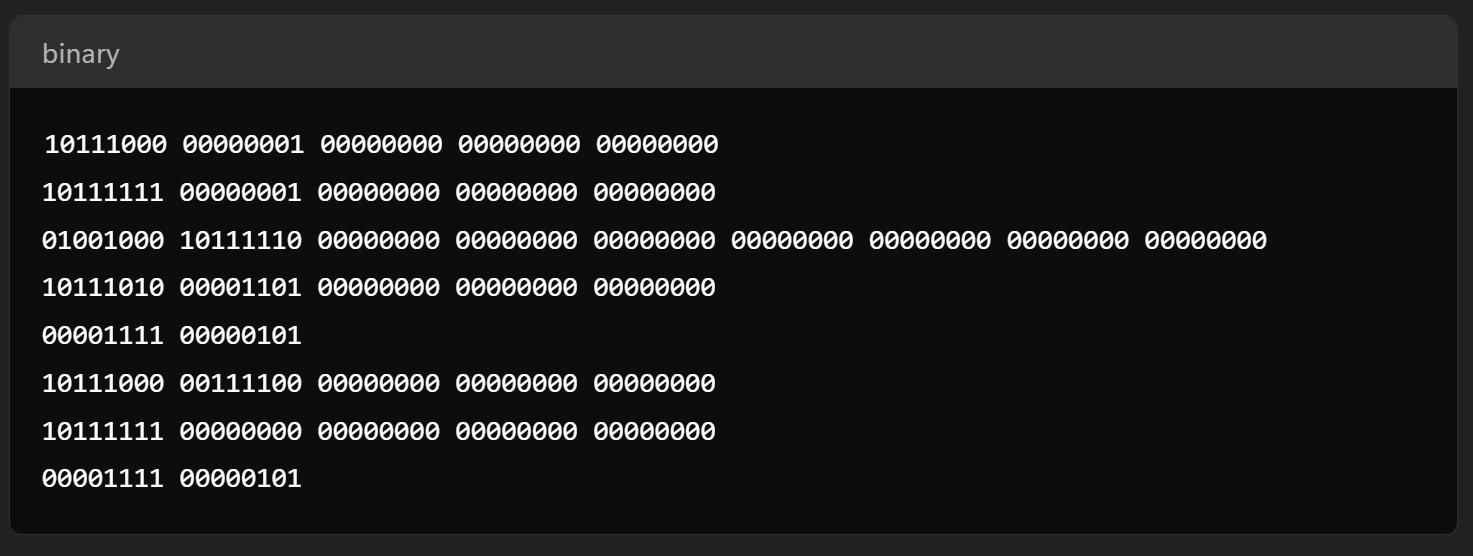
When software is written in a variety of programming languages, machine code ensures that high-level, human-readable commands are transformed into machine-readable instructions. Furthermore, machine code is optimized for the specific hardware it runs on, maximizing efficiency and performance.
Bytecode is a compact, platform-independent, and portable version of high-level code. It's akin to a middle ground between source code and machine code: It's not readable by a human programmer like source code, but it's also not readable by hardware, like machine code. Instead, a compiler within a programming environment translates the source code into bytecode, which is then executed by a virtual machine or interpreter or compiled further.
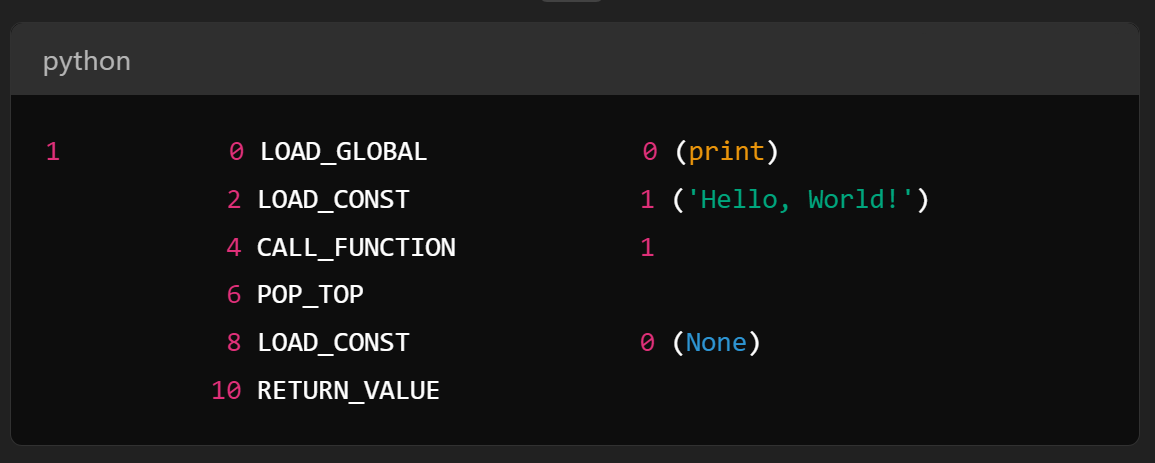
This distinction is important because modern software often needs to run on various devices, operating systems, and platforms. Bytecode enables this by providing a simplified, standardized representation of the source code in numeric form.
This format makes bytecode lightweight and portable, unlike machine code, which is often specific to a particular hardware architecture (e.g., a specific CPU). As long as a system has the appropriate virtual machine, it can execute the bytecode.
In simple terms, bytecode is a streamlined, compact version of a program written in a high-level programming language, such as Java or Python. However, it cannot be executed without a virtual machine or interpreter. Bytecode is also sometimes referred to as "p-code" (short for portable code).
Machine code is generally faster than bytecode because it is easier and quicker for a computer to process. This is primarily due to the absence of an abstraction layer, which is present in bytecode to simplify programming and compilation. While this abstraction layer makes code development more efficient for programmers, it often results in a trade-off in performance. Abstraction reduces the code's granularity and limits direct control over machine operations.
Machine code is closely aligned with the hardware's cache, memory, and other components, enabling software to be highly optimized for the specific hardware. Written in the computer's native language, machine code eliminates the need for additional interpretation. This means you are giving the machine exact instructions in the language specifically designed for it, resulting in minimal overhead and faster execution.
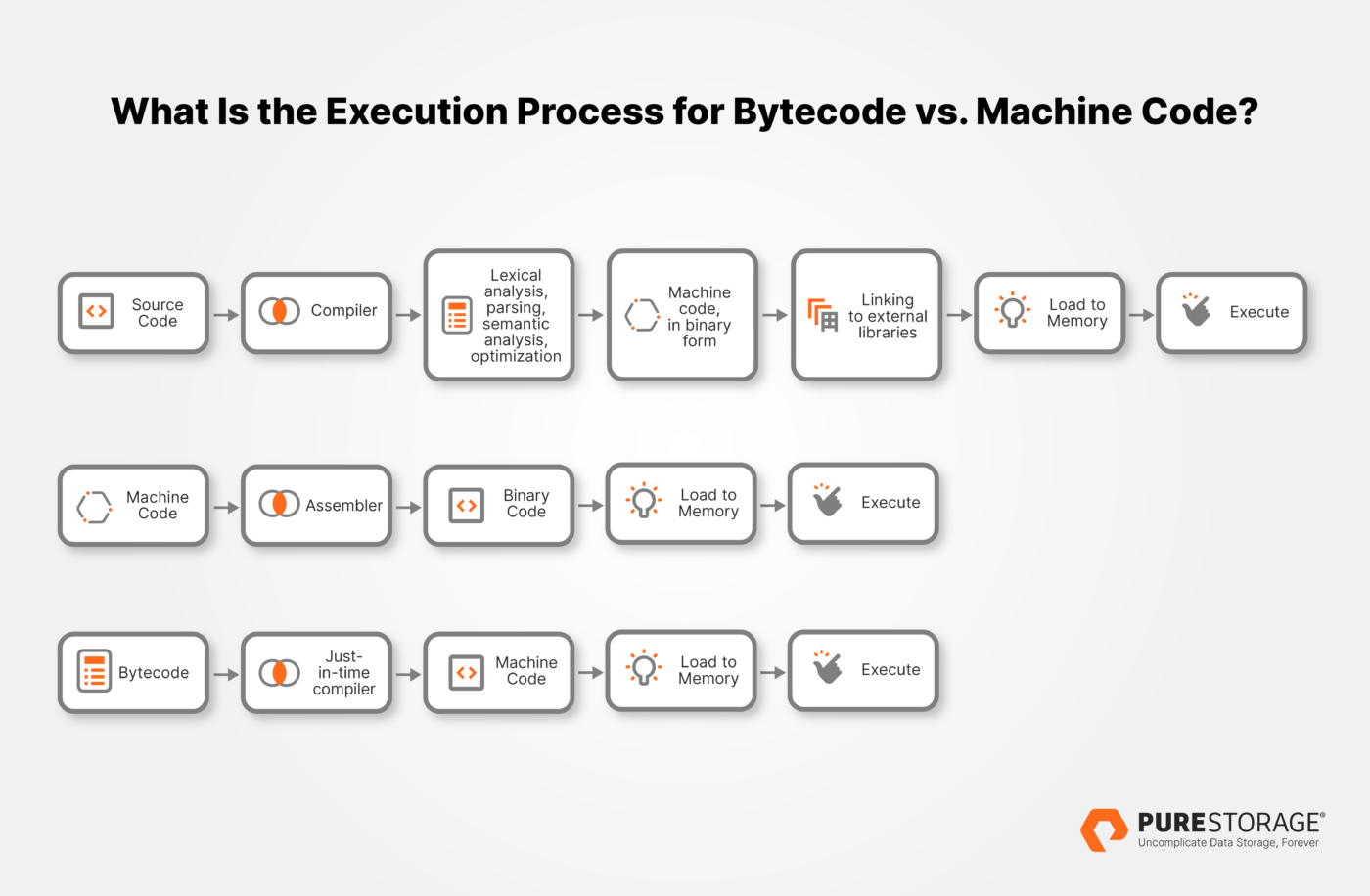
Bytecode, on the other hand, requires an additional layer of interpretation, which can introduce delays and complexity. Techniques like just-in-time (JIT) compilation can improve bytecode performance by converting it to machine code during runtime. However, machine code still benefits from superior hardware-level optimization.
A compiler that generates hardware-specific machine code can fully utilize the unique features of the hardware, whereas bytecode often cannot leverage these features as effectively.
No, binary code is not the same as bytecode. While both are written in binary format (sequences of 1s and 0s), they serve different purposes:
Yes, the Common Intermediate Language (CIL) in Microsoft's .NET framework is a form of bytecode. Like Java, .NET operates on the principle of "write once, run anywhere." A compiler translates source code written in .NET languages into CIL instructions. These instructions can then be executed on any system with a compatible Common Language Runtime (CLR).
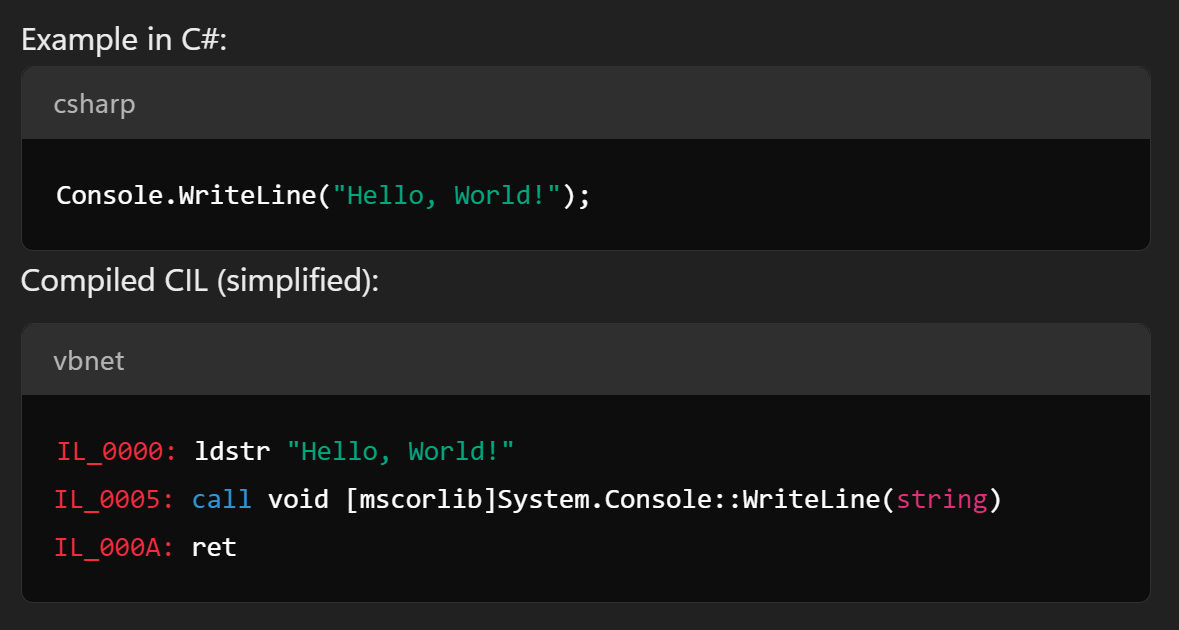
Java is one of the most portable modern programming languages and bytecode is a cornerstone of this characteristic. When a Java application is compiled, the compiler generates bytecode instead of machine code.
When a Java application is written, it gets compiled and generates bytecode, which provides instructions to the JVM, which acts as an interpreter for each method in the Java program. The machine code it generates can be efficiently executed by the CPU.
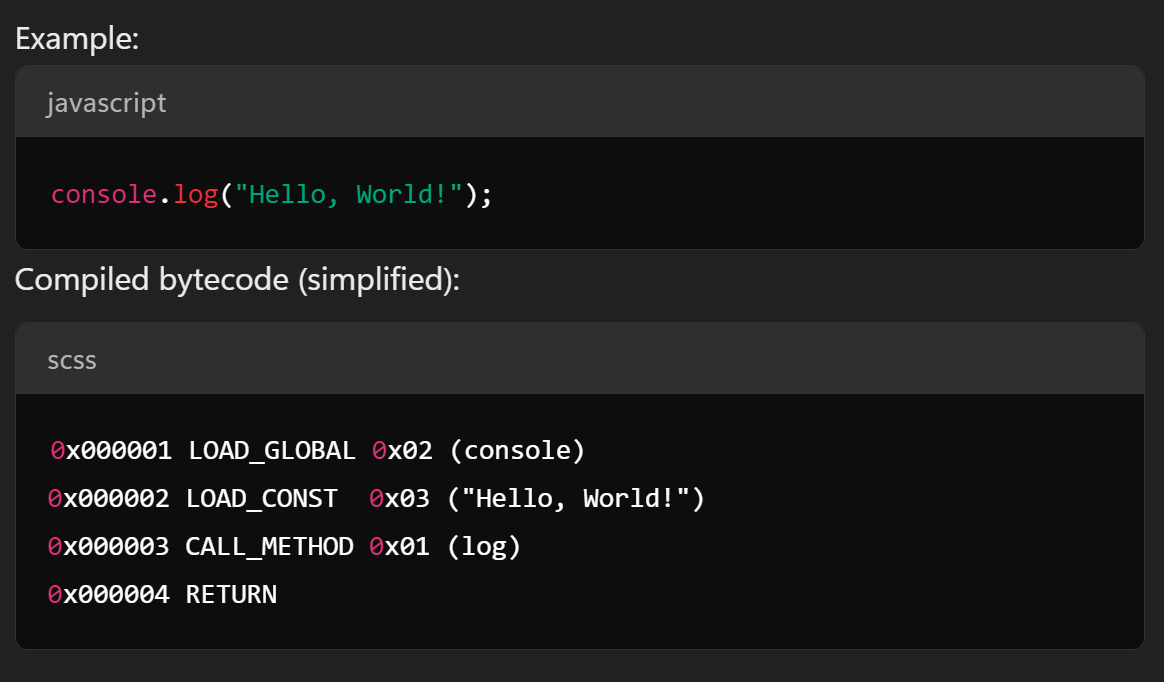
Just-in-time compilers can help developers get the best of both worlds: the portability of high-level programming compiled into bytecode with the efficiency of machine code and better optimization of machine-specific features.
 API Candidates Vie for L.A. County Judicial, School Board Positions
API Candidates Vie for L.A. County Judicial, School Board Positions
 5 chore apps that might get your kids to clean their room already
5 chore apps that might get your kids to clean their room already
 Facebook is building an Instagram for kids under 13
Facebook is building an Instagram for kids under 13
 Wikipedia wants to charge Google, Amazon, and Apple for using its content
Wikipedia wants to charge Google, Amazon, and Apple for using its content
 Manzanar Welcomes New Bookstore Operator
Manzanar Welcomes New Bookstore Operator
 How to fund your business as a Black entrepreneur
How to fund your business as a Black entrepreneur
 Please, I beg of you, stop suggesting consent apps
Please, I beg of you, stop suggesting consent apps
 'Falcon and the Winter Soldier' has us pondering Bucky's sexuality
'Falcon and the Winter Soldier' has us pondering Bucky's sexuality
 Tsutsui Resigns as Hawaii Lieutenant Governor
Tsutsui Resigns as Hawaii Lieutenant Governor
 The 'Trading Places' reference in 'Coming 2 America' is everything
The 'Trading Places' reference in 'Coming 2 America' is everything
 After Passing House, Bill to Honor Chinese American WWII Vets Heads to President’s Desk
After Passing House, Bill to Honor Chinese American WWII Vets Heads to President’s Desk
 'PG: Psycho Goreman' director Steven Kostanski talks his cult hit
'PG: Psycho Goreman' director Steven Kostanski talks his cult hit
 The iPhone just got 'important security updates.' Download them.
The iPhone just got 'important security updates.' Download them.
 Facebook is building an Instagram for kids under 13
Facebook is building an Instagram for kids under 13
 Filipino American Candidates Make Runoffs in Legislative Races
Filipino American Candidates Make Runoffs in Legislative Races
 The 16 best tweets of the week, including stimmies, the plums meme, and illegal seafood
The 16 best tweets of the week, including stimmies, the plums meme, and illegal seafood
 Weather experts warn of brutal storms, tornado outbreaks in the South
Weather experts warn of brutal storms, tornado outbreaks in the South
 The UK is considering making street harassment a crime
The UK is considering making street harassment a crime
 Vincent Okamoto Named Nisei Week Grand Marshal
Vincent Okamoto Named Nisei Week Grand Marshal
 How to fund your business as a Black entrepreneur
How to fund your business as a Black entrepreneur
'Minecraft' players on the autism spectrum find a safe space on the Autcraft server'Minecraft' players on the autism spectrum find a safe space on the Autcraft serverThere's more to this South Korean politician's airport swagger than you might thinkHarvard newspaper hacked just to make fun of grad speaker Mark ZuckerbergBromance for the ages: Trudeau and Macron stroll in an Italian gardenSinkhole opens up outside MarNext up on Pete Souza's Trump trolling list: The Pope10 years of Pornhub has taught us a lot about our desiresShep Smith shuts down former Trump advisor for politicizing the Manchester attackSerena Williams has a new gig in Silicon Valley ‘The Dam Keeper’ Gets Annie Nomination for Best Short Subject Astralis beat Liquid in two maps; to face NRG in semi Everything from Kimono to Kendama United Methodists Bring Holiday Cheer to DTLA San Diego Asian Film Festival Rolls Out 15th Year with Expanded Programming, World Premieres GENIE'S LAMP: I Watch Him Best Nintendo Switch deal: Get a Nintendo Switch for $276.99 plus $25 in Amazon credit 'Moon' Rises in J Kudos to the Cube Ghostly Good Fun
0.1804s , 10067.015625 kb
Copyright © 2025 Powered by 【????? ?????? ??????】Enter to watch online.Understanding Machine Code vs. Bytecode,Global Perspective Monitoring